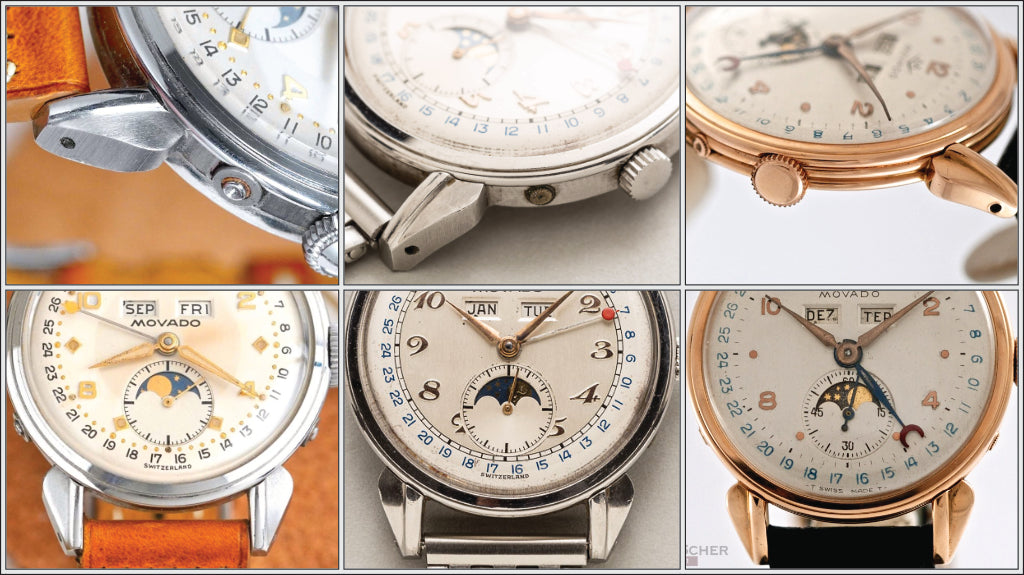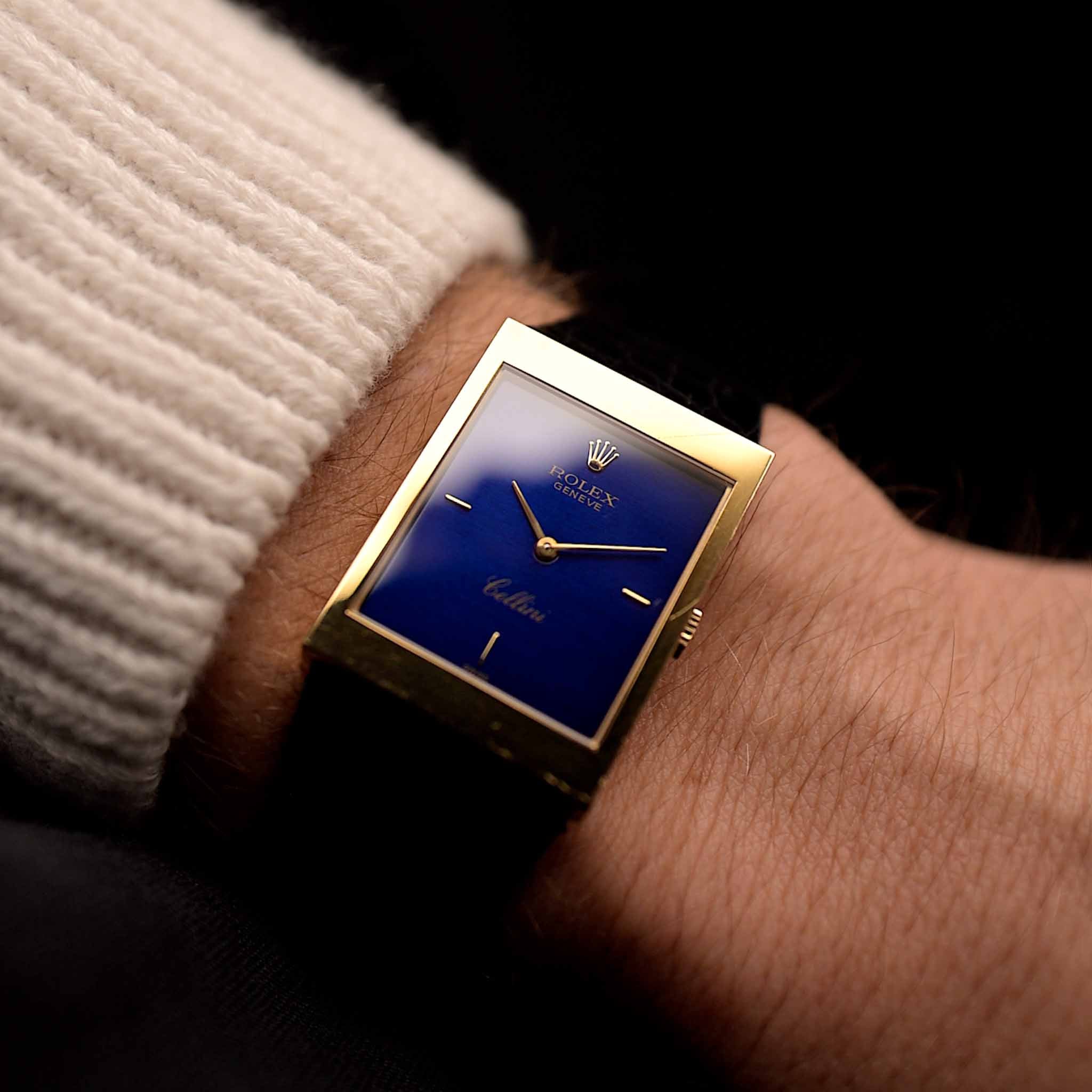How much can you actually know about vintage Breitling? There are references, catalogues, pictures, auction results, advertisements... But how can you combine so much information into a cohesive heritage? Can we actually quantify the legacy, the design heritage of a brand? In the end, heritage is an elusive word, an abstract construct relying on a context. Thus, I wanted to add some hard numbers to these concepts and analyzed several design features of about 750 Breitling watches from the last century (1940-2000). On top I compared those to an additional 5000 vintage watches from the same time period to put them into perspective
January 18, 2022
How Much Do You Know About Vintage Breitling?
 Marcus Siems @siemswatches
Marcus Siems @siemswatches
Collector, Author, Data Analyst
When Watches & Wonders - one of the major watch fairs - opened its virtual gates in April 2021 all of the watch outlets where flooded with new releases from a majority of the big Swiss players. And as the general public was putting an eye on the watch world one brand used the wave to premier a very special one of their own, the Breitling Premier chronograph. Interestingly, Breitling was actually not even officially part of the 2021 Watches & Wonders[1], still the heritage inspired Premier made a big splash and was one of the best perceived releases of the week.
The Premier was not the first re-issue of a classic Breitling model in the recent years. Since Georges Kern became the brands new CEO in 2017 Breitling launched re-interpretations of the SuperOcean, the Top Time along with a classic Navitimer and Co-Pilot (Aviator). All of these are vintage inspired pieces, tapping from a rich history and legacy of a brand established in 1884[2].
 The Breitling Premier B15 Duograph from the 2021 Heritage collection. Photo Courtesy of Breitling SA.
The Breitling Premier B15 Duograph from the 2021 Heritage collection. Photo Courtesy of Breitling SA.
So the question I want to ask here is: Can we quantify the legacy, the design heritage of a brand? In the end, heritage is an elusive word, an abstract construct relying on a context. Thus, I wanted to add some hard numbers to these concepts and analyzed several design features of about 750 Breitling watches from the last century (1940-2000). On top I compared those to an additional 5000 vintage watches from the same time period to put them into perspective (extracted from chrono24[3]). With the means of quantitative data analysis I wanted to define the design evolution of this horological original, and see how quantitative heritage can look like.
To the Breitling history: Founded 1884 in St. Imier, Leon Breitling started his workshop with a clear focus on precision timing instruments. From the very beginning Breitling was a company that was targeting the - pocket watch - chronograph market[4,5,6].
The first 30 years went by and Leon’s son Gaston took over the family business in 1914 and quickly adapted the company to the new trends of the time; the wristwatch. Already in 1915 Breitling produced its first wristwatch chronograph just 2 years after Longines debuted this horological field with their caliber 13.33Z [7,8].
 Figure 1. Distribution of Breitling watch types (left) and the proportion of Breitling watches from 1940-2000 on the vintage market (right).
Figure 1. Distribution of Breitling watch types (left) and the proportion of Breitling watches from 1940-2000 on the vintage market (right).
Breitling stayed a chronograph power-house all throughout the last century. Over 80% of all Breitling watches on the vintage market feature the time-stopping complication. Moreover, the market share follows the overall trajectory of the Chronograph appeal (r=0.49). The data shows that the history of Breitling and that of the chronograph are tightly linked.
But it’s not just in the numbers that couple the success of the 20th Century chronograph and the story of Breitling. With its 1915 chronograph caliber Breitling were the first to place an independent push-piece, away from the crown, to better operate the chronograph function[5].
And in 1934 (1923 for pocket watches) - under the direction of third generation Willy Breitling - separated the start/stop function from the reset function by introducing the second off-crown pusher.
 Breitling's history goes back a long way, particularly for these amazingly functional, 2-pusher chronographs. Photo @goldammer.me
Breitling's history goes back a long way, particularly for these amazingly functional, 2-pusher chronographs. Photo @goldammer.me
But putting all these technical innovations aside, what's the underlying design language of Breitling throughout the 20th Century? Our dataset can help us out here. If we combine all the different design features - case size and form, hand shape, hour marker, bezel style, number of hands and numerals, applied materials, etc.- of our 750 vintage Breitling watches we can gain a holistic insight into the design evolution of this particular brand.
 Figure 2. Distribution of Breitling vintage watches from 1940-2000 (734 total watches) grouped by design and Zeitgeist. Into the clustering all design features are integrated: case size and form, hand shape, hour marker, bezel style, dial color, number of hands and numerals, applied materials & watch type.
Figure 2. Distribution of Breitling vintage watches from 1940-2000 (734 total watches) grouped by design and Zeitgeist. Into the clustering all design features are integrated: case size and form, hand shape, hour marker, bezel style, dial color, number of hands and numerals, applied materials & watch type.
Let me guide you through this graphic. Every dot corresponds to one watch. The color tells you the age of a timepiece, very dark colors showing you watches from the 1940s and 50s, brighter colors being watches from the 1980s and 90s. How close two dots are describes how similar their design is. The similarity is based on the concept of design age - so the combination of the distributions of all key design elements.
 Zooming in on all the Breitling design elements - markers, hands, numerals, dial color, material, strap... Photo @goldammer.me
Zooming in on all the Breitling design elements - markers, hands, numerals, dial color, material, strap... Photo @goldammer.me
That was the how, now to the results themselves. We can go through the history of Breitling if we go from top to bottom. This means that the watches approximately arrange to production age in that dimension.
However, there is a lot going on beyond physical age. Watches cluster everywhere and critically we observe that pieces can speak the same design language yet stem from distinct epochs. So let's try to make more sense of these patterns. First, before we go into the different references, let’s have a look at the watch types that we see here.
 Figure 3. Distribution of Breitling vintage watches from 1940-2000 (734 total watches) grouped by design and color-coded for the watch type: green - chronograph, yellow - dress watch, purple - sport watch, blue - diver.
Figure 3. Distribution of Breitling vintage watches from 1940-2000 (734 total watches) grouped by design and color-coded for the watch type: green - chronograph, yellow - dress watch, purple - sport watch, blue - diver.
As expected chronograph watches (green) dominate the picture. However, if we do the math right[9,10,11] we see that there exist at least nine clusters of watches within all the vintage watches of Breitling - and importantly not all of these clusters contain chronograph pieces. Breitling produced quite some dress watches in the 1950s and early 60s, which nicely group together on the top. Additionally, we observe two independent dive/sports watch cluster at the bottom, too.
 Where can we put these two vintage Breitling chronographs within our graph? Are they close together or do they refer to different epochs? Photo @goldammer.me
Where can we put these two vintage Breitling chronographs within our graph? Are they close together or do they refer to different epochs? Photo @goldammer.me
But what’s the story behind the dots? Let’s put some faces onto these abstract mathematical constructs. What have the watches within these clusters in common? How do they look like? And where can we find the iconic Breitling models - the Premier, the Navitimer, the TopTime, the Superocean, or the Chronomat? A closer look into the history of this powerhouse.
References
[1] Watches And Wonders Geneva 2021;
https://www.watchesandwonders.com/en/geneva
[2] Vintage Breitling Chronographs - how they influenced the chronograph of today; Felix Goldammer, Goldammer Vintage Watches;
https://www.youtube.com/watch?v=cIWWhxaujCk
[3] Watches from Chrono24, extracted 2020 Nov. 29th; Karlsruhe, Germany;
[4] Since 1884: The Breitling Story; Breitling
https://www.breitling.com/us-en/about/since1884/history/
[5] Breitling Watch Brand Review & History: Certified Chronographs With Sky-High Precision; Paul Anthony, BespokeUnit;
https://bespokeunit.com/watches/breitling/#chronograph
[6] The history of Breitling – the brand that conquered air, land and sea; Russell Sheldrake, The Gentleman’s Journal;
https://www.thegentlemansjournal.com/article/history-of-breitling/
[7] History of the Chronograph – The Watch that Stops; James Smith, Heddels;
https://www.heddels.com/2018/01/history-of-the-chronograph-2/
[8] The History of the Chronograph; Crown & Caliber;
https://blog.crownandcaliber.com/the-history-of-the-chronograph/
[9] Laurens van der Maaten, and Geoffrey Hinton. Visualizing Data using t-SNE. J. Machine Learning Research 9, 2008;
[10] Brendan J. Frey, and Delbert Dueck, Clustering by Passing Messages Between Data Points. Science 315, 2007;
[11] Kaijun Wang, Junying Zhang, Dan Li, Xinna Zhang, and Tao Guo, Adaptive Affinity Propagation Clustering. bioRxiv, 2008;
All rights on text and graphics reserved to the Author.




























Leave a comment